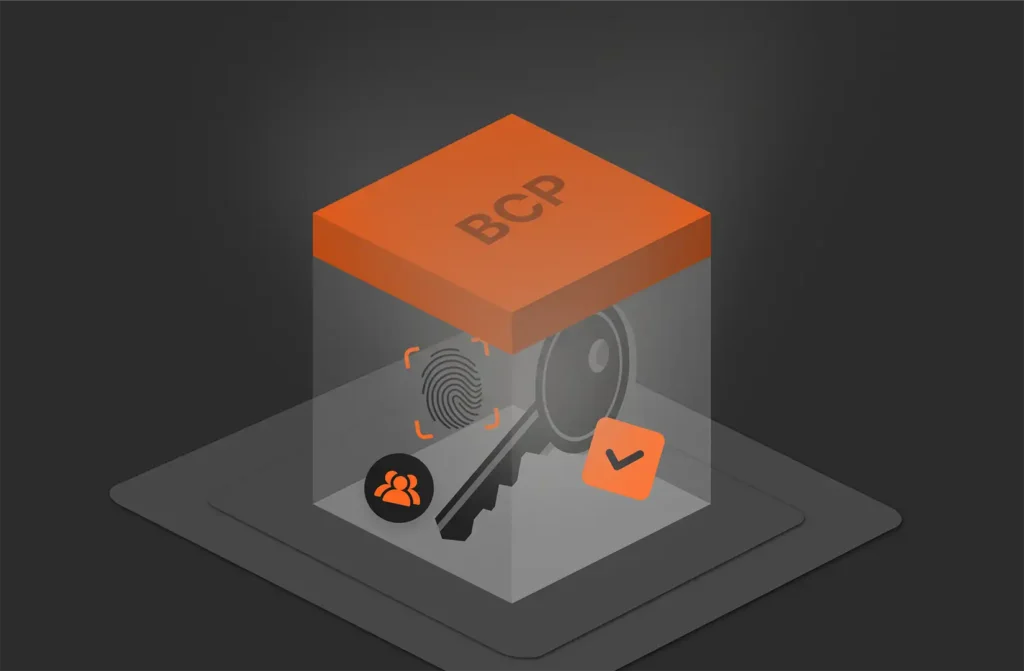Summary
Ransomware poses a significant threat to businesses today. It’s critical to have ransomware mitigation strategies, such as regular data backups, employee training, strong security measures, and more, in place to build resilience.
Ransomware is a type of malicious software designed to encrypt data and hold it hostage until a ransom is paid. It poses a significant threat to businesses of all sizes, which will need to implement mitigation strategies to combat this growing problem.
In the healthcare industry alone, ransomware has caused nearly $22 billion in downtime losses over the last six years. Globally, ransomware costs are expected to reach $265 billion by 2031.
While there is no way to really “beat” ransomware, there is a lot companies can do to prevent it and minimize damage when it does occur. Read on to explore the various types of ransomware mitigation strategies—what they are, how they work, and the technology you need to support them.
Understanding Ransomware
Ransomware is malware cybercriminals use to lock or encrypt a victim’s data and then demand payment, often in the form of cryptocurrency, to restore access. Ransomware attacks typically begin with phishing emails, malicious downloads, or exploiting vulnerabilities in software systems. Once activated or deployed, ransomware can spread rapidly across networks, crippling operations.
The most common types of ransomware are:
- Encryption ransomware: This type encrypts files and demands a ransom for the decryption key, making it one of the most devastating forms of attack.
- Locker ransomware: Instead of encrypting files, this type locks users out of their devices, preventing access to the system entirely.
- Double extortion ransomware: Attackers not only encrypt data but also threaten to leak sensitive information if the ransom isn’t paid.
Importance of Ransomware Mitigation
Ransomware mitigation is essential for businesses of all sizes, as the consequences of an attack can be devastating. Cybercriminals increasingly target organizations with weak defenses, knowing the potential for high payouts. Without effective ransomware mitigation strategies in place, businesses risk severe disruptions and long-term damage.
The potential impacts of a ransomware attack include:
- Financial loss: Ransomware cost businesses a record-high $1 billion in 2023.
- Data loss: If attackers encrypt or destroy critical data and backups are insufficient or compromised, the loss can be irreversible.
- Reputational damage: Customers and partners may lose trust in a business’s ability to safeguard sensitive information, affecting long-term relationships and market credibility.
Additionally, regulatory and compliance frameworks, such as GDPR, HIPAA, and CCPA, impose strict requirements for data protection. A ransomware attack that leads to data breaches can result in hefty fines and legal consequences.
Best Ransomware Mitigation Strategies
Here are the best ransomware mitigation strategies companies can start implementing now.
1. Regular Data Backups
If you’re not backing up your data, you’re making your company extremely vulnerable to ransomware. Regular data backups are a cornerstone of effective ransomware mitigation. In the event of an attack, having recent and accessible backups ensures that critical data can be restored without succumbing to ransom demands. This strategy minimizes downtime, financial loss, and operational disruption.
To maximize the effectiveness of data backups, consider the following best practices:
- Backup frequency: Perform backups daily or more frequently, depending on the criticality of your data. This ensures minimal data loss in case of an attack.
- Storage locations: Follow the 3-2-1 rule: Keep three copies of your data (production, local backup, and off-site backup) across two different media types, with one copy stored off-site or in the cloud.
- Testing backups: Regularly test backups to verify their integrity and ensure they can be restored quickly when needed.
- Encryption and access control: Encrypt backups to protect against unauthorized access and limit access to only trusted personnel.
Pure Storage® FlashBlade® delivers Rapid Restore for production and dev/test workloads with up to 270TB/hr of data recovery performance.
2. Employee Training and Awareness
Employee training plays a pivotal role in ransomware mitigation, as human error is one of the most common entry points for cyberattacks. Educating employees about ransomware risks and tactics empowers them to act as the first line of defense.
Key topics to include in training sessions are:
- Recognizing phishing emails: Teach employees how to identify suspicious emails, links, and attachments, emphasizing the importance of verifying the sender before clicking.
- Safe internet practices: Encourage the use of secure websites, strong passwords, and caution when downloading files or visiting unfamiliar sites.
- Incident reporting: Ensure employees understand the importance of reporting potential security threats immediately to IT teams.
- Use of multi-factor authentication (MFA): Highlight the added security provided by MFA in protecting accounts from unauthorized access.
Integrating employee training into a broader ransomware mitigation plan ensures that your workforce remains vigilant and prepared, reducing the likelihood of successful attacks and strengthening your organization’s overall security posture.
3. Network Segmentation
Network segmentation is the practice of dividing a network into smaller, isolated segments, each with its own security controls. This approach is a powerful tool for ransomware mitigation, as it limits the spread of malware and protects sensitive data even if one segment is compromised.
To properly implement network segmentation:
- Assess and map the network: Identify all assets, applications, and data flows to understand how they interact.
- Define segmentation policies: Categorize assets based on their sensitivity and functionality, and assign appropriate access controls.
- Implement virtual LANs (VLANs) and subnets: Use VLANs and subnets to create isolated segments within the network.
- Control access with firewalls: Configure firewalls to enforce rules between segments, ensuring only authorized traffic flows between them.
- Adopt zero trust principles: Require verification for every device and user accessing a segment, minimizing potential entry points for attackers.
- Test and monitor: Continuously test segmentation policies and monitor traffic for signs of compromise or misconfiguration.
4. Incident Response Planning
Creating an incident response plan is a key part of cyber resilience. It helps with ransomware mitigation by providing a structured approach to detect, respond to, and recover from attacks. Without a clear plan, businesses risk delays in containment and recovery, leading to prolonged downtime and greater financial and reputational damage.
The key components of an effective incident response plan include:
- Defined roles and responsibilities: Assign specific tasks to team members, such as containment, communication, and forensic analysis, ensuring a coordinated response.
- Effective communication strategies: Establish internal and external communication protocols, including how to notify stakeholders, customers, and authorities while preserving confidentiality.
- Containment steps: Detail how to isolate infected systems to prevent the spread of ransomware and remove the malware from affected devices.
- Recovery procedures: Include steps for restoring systems and data from backups, verifying the integrity of recovered data, and resuming normal operations.
- Legal and regulatory considerations: Address compliance requirements for reporting incidents and managing sensitive data.
- Regular testing and updates: Test the incident response plan regularly through tabletop exercises and simulated ransomware attacks to identify gaps and ensure the team is prepared. Update the plan periodically to reflect new threats, technologies, and organizational changes.
Conclusion
Ransomware attacks continue to be a pervasive threat, making ransomware mitigation strategies a top priority for businesses. Key strategies such as regular data backups, employee training, strong security measures, network segmentation, and a robust incident response plan are essential to building resilience.
By taking proactive steps, including testing and updating these measures, businesses can minimize the impact of ransomware attacks and safeguard their operations, data, and reputation.
Don’t wait for an attack to happen—start implementing ransomware mitigation strategies today to secure your organization’s future.

White Paper, 7 pages
Learn What’s Helping CISOs Sleep Better at Night
And how you can too.
Ensure Your Success
Put insights from CISOs to work for your organization.






